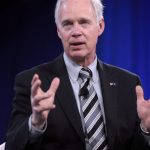From President Joe Biden’s point of view, Americans ought to be thrilled with the recent trends in inflation.
“Wages keep going up and inflation keeps coming down,” the president victoriously declared at the State of the Union address in early March. The administration’s economic messaging has consistently stressed that lowering inflation is Biden’s “top economic priority” and that progress is being made toward the goal of taming price increases. “Inflation has fallen 60 percent from its peak,” the White House pointed out in a statement after the most recent Consumer Price Index report. “We’re making progress: wages are rising faster than prices, incomes are higher than before the pandemic, and unemployment has remained below 4% for the longest stretch in 50 years.”
All of those things are true—but pointing at the charts and regurgitating economic figures doesn’t seem to be as convincing as the president might hope.
A new Gallup poll shows that the number of Americans who name inflation or the cost of living as their top economic concern continued to grow over the past 12 months, even as price increases have slowed to more normal-ish levels. It’s the third year in a row that Gallup has recorded inflation as the most commonly mentioned economic concern in their annual personal finance poll—but the 41 percent of respondents who named inflation as the top concern this year was up from 35 percent a year ago and 32 percent in 2022.
In the Gallup poll, inflation dwarfs other concerns. “The cost of owning or renting a home” ranks second at just 14 percent, while “having too much debt” ranks third at 8 percent.
There are a few different ways one might interpret this information. Probably the most obvious takeaway is that falling inflation rates haven’t broken through the persistent sense that prices are too high—despite the White House’s attempt to convince people that things are getting better.
It makes sense that the recent run of inflation would leave a psychological scar. After all, the peak inflation rate of 9.1 percent in June 2022 was not only the highest annualized rate seen in more than four decades, it was also more than twice as high as the average inflation rate in any year since 1991. That means prices were rising two to three times more quickly than during the worst bout with inflation that most Americans can easily recall.
In March, the annual inflation rate was 3.5 percent. Yes, that’s 60 percent lower than the peak rate in June 2022, but that’s still higher than the average annual rate in every single year between 1991 and 2021, except for 2008.
Meanwhile, higher interest rates are likely compounding the perception that inflation is a major problem.
From an economic perspective, those higher interest rates are necessary to calm inflation. But from a consumer’s perspective, the money in your wallet now has less buying power and it’s more expensive to borrow money for a car loan or mortgage. It’s a squeeze from both directions.
If you’re, say, a president running for re-election in this environment, you might find a different aspect of this Gallup poll to focus on. Perhaps what’s happening is that more people are naming inflation as their top concern because other concerns have fallen away. That could even be good news—a reflection of low unemployment and rising wages. After all, something has to be the top economic concern, even in good economic times.
The thing that is unlikely to work is trying to convince people that the economy is strong while inflation remains above 3 percent and interest rates are also elevated. “If you’re explaining, you’re losing,” is the famous political aphorism—and unfortunately for Biden, his task in the run-up to November’s presidential election is explaining to people that they shouldn’t feel like inflation is still a problem.
The post Americans Are Still Really Worried About Inflation appeared first on Reason.com.







